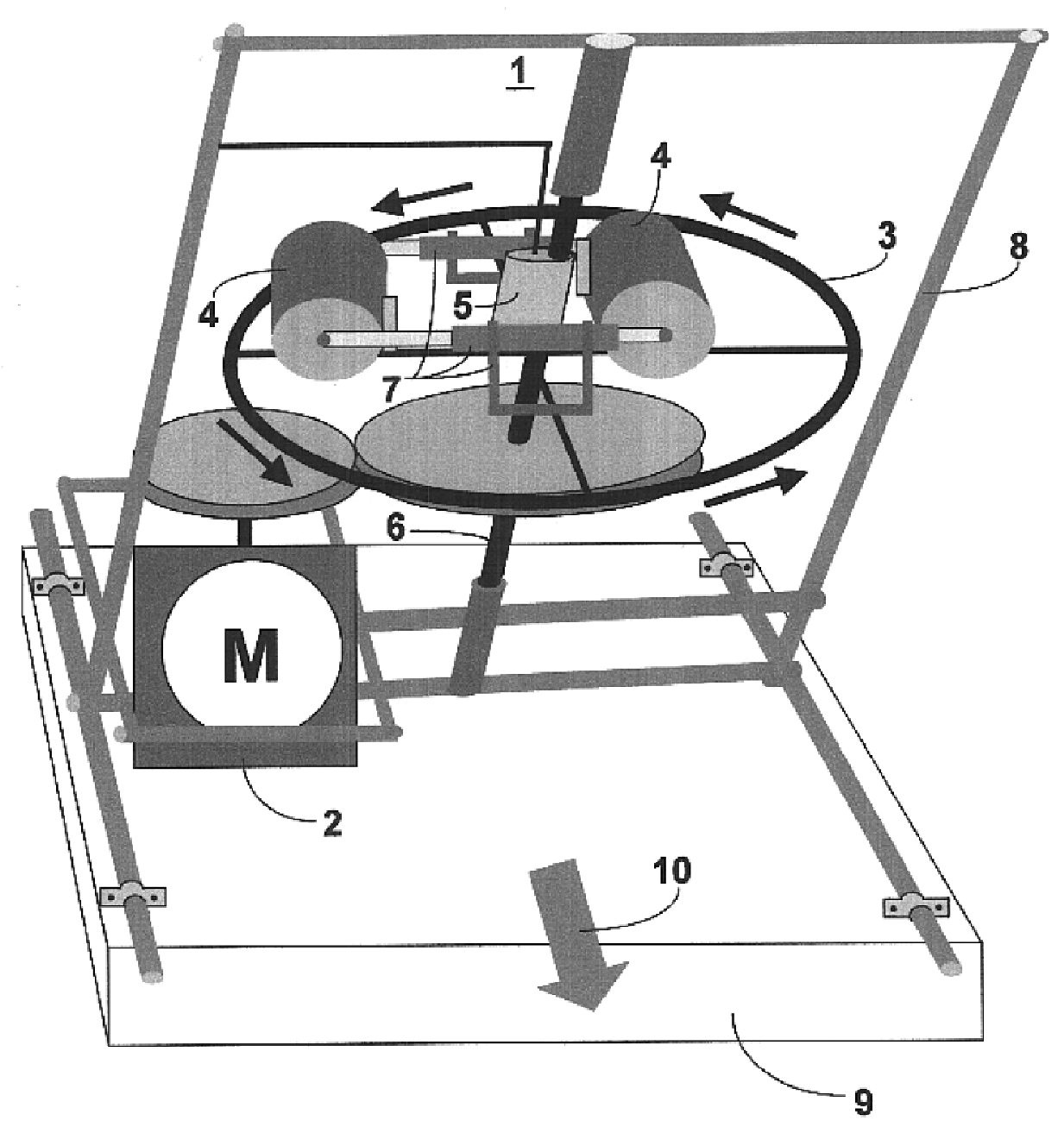Unbalanced gyroscopic apparatus for producing unidirectional thrust
a gyroscopic apparatus and unbalanced technology, applied in the direction of machines/engines, cosmonautic vehicles, gearing, etc., can solve the problems of complex relay and switching systems, visible wobble of the spin axis, and limited recovery of space shuttles to direct launch of low-orbit space vehicles
- Summary
- Abstract
- Description
- Claims
- Application Information
AI Technical Summary
Benefits of technology
Problems solved by technology
Method used
Image
Examples
Embodiment Construction
A preferred embodiment of the unbalanced gyroscopic apparatus for producing unidirectional thrust is illustrated in the FIG. 1 overview. The invention incorporates timed control of stable, unbalanced weight states in an unbalanced gyroscopic apparatus changing weight positions slidably along a spin-plane diameter path every 180 degrees of rotation. This action results in a change in momentum of the weights 4 on the spin plane 3 resulting in a reaction thrust of the spin axis 6 in the thrust direction 10. The invention fully assembled 1 and attached to a body 9 to receive thrust is shown in FIG. 1. The elements of the apparatus include: a motor element 2, a spin-plane element 3, a weight-pair element 4, a change-state element 5, a spin axis 6, a spin-plane frame element 7, and an assembly frame element 8. The assembly frame element is attached to a body to receive unidirectional thrust 9 in a thrust direction 10.
In FIGS. 2A-2D, the detail sequence producing unidirectional thrust at t...
PUM
 Login to View More
Login to View More Abstract
Description
Claims
Application Information
 Login to View More
Login to View More - R&D
- Intellectual Property
- Life Sciences
- Materials
- Tech Scout
- Unparalleled Data Quality
- Higher Quality Content
- 60% Fewer Hallucinations
Browse by: Latest US Patents, China's latest patents, Technical Efficacy Thesaurus, Application Domain, Technology Topic, Popular Technical Reports.
© 2025 PatSnap. All rights reserved.Legal|Privacy policy|Modern Slavery Act Transparency Statement|Sitemap|About US| Contact US: help@patsnap.com



